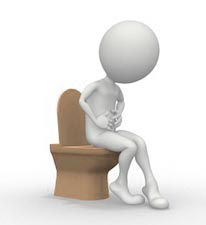 Seasonal Affective Disorder (SAD) is a mood disorder associated with depression that arises at a certain time of the year, usually in the winter – which is why the term ‘winter blues’ is commonly used to describe this condition. A less common type of the disorder can be experienced during the summer months. This type of depression occurs with seasonal variations of light change, which trigger SAD.
Seasonal Affective Disorder (SAD) is a mood disorder associated with depression that arises at a certain time of the year, usually in the winter – which is why the term ‘winter blues’ is commonly used to describe this condition. A less common type of the disorder can be experienced during the summer months. This type of depression occurs with seasonal variations of light change, which trigger SAD.
Prevalenceand Risk Factors
SAD usually affects individuals who are between the ages of 18 and 30, and like other types of depression, occurs more often in women than in men. SAD is extremely rare amongst people living within 30 degrees latitude of the equator thus a person’s vulnerability to the disorder and the severity depends on his/her geographical locality.
SAD often occurs in individuals from both the northern and southern hemispheres and people who have a family history of SAD or those who have been diagnosed with clinical depression or bipolar disorder.
Causes of SAD
A specific cause of seasonal affective disorder is not known, however, as with numerous mental health conditions, age, genetics and your body’s natural chemical makeup can all contribute to developing this condition. The following factors are known to play a role in the development of SAD:
- Serotonin levels – A decrease in serotonin levels, which is a brain chemical that affects mood, is a contributor factor in the development of SAD. Reduced sunlight can decrease serotonin levels which in return trigger depression.
- Melatonin levels – The change of seasons also disrupts the stability of the natural hormone melatonin. This hormone plays a role in sleep patterns and mood.
- Circadian rhythm – The reduced level of sunlight during the fall months as well as during winter can disrupt the body’s internal clock which is responsible for letting you know when you should sleep and when you should be awake. This disturbance of your circadian rhythm can lead to feelings of depression.
Symptoms of SAD
Seasonal affective disorder symptoms usually build up slowly in late autumn and winter months and disappear during sunnier days of spring and summer. For individuals with the opposite pattern, symptoms usually begin in spring or summer and fade away during darker seasons. Nonetheless, SAD symptoms are usually similar to those of other forms of depression. These include:
- Increased appetite with weight gain
- Increased sleep
- Anxiety
- Difficulty concentrating
- Appetite changes, especially a craving for foods high in carbohydrates
- Less energy and ability to concentrate
- Loss of interest in work or other activities
- Social withdrawal
- Sluggish movements
- Unhappiness and irritability
- Depression
- Heavy, “leaden” feeling in the arms or legs
It is possible for SAD to become long-term depression. Bipolar disorder or thoughts of suicide are also possible in people with SAD.
Tests and Diagnosis of SAD
To help doctors and mental health providers diagnose seasonal affective disorder, they need to do a thorough evaluation. An evaluation usually includes a physical exam where the health provider checks for any underlying physical issues which may be linked to the depression. The doctor will also ask detailed questions about seasonal and mood changes in ones thoughts and/or behavior. The health worker will also conduct a medical test if he/she suspects that a physical condition is causing or worsening the depression. During this type of medical test, blood will be drawn to rule out the underlying problem.
It is important to note however that even with a thorough evaluation, it can be difficult for a doctor or mental health provider to diagnose SAD as other forms of depression or mental health conditions can cause similar symptoms.
Treatment for SAD
Treatment for SAD may include medication, psychotherapy and light therapy.
- Medication
Certain individuals with SAD can benefit from antidepressant treatment, especially if they experience severe symptoms. Antidepressants that are commonly used to treat seasonal affective disorders include sertraline (Zoloft), paroxetine (Paxil) and venlafaxine (Effexor). The antidepressant bupropion (Wellbutrin XL) can help prevent depressive episodes in people with a history of SAD. - Psychotherapy
Psychotherapy is another route that can be followed to treat SAD. Psychotherapy can be beneficial as it helps patients to be able to identify and change negative thoughts and behaviors that may be making them feel worse. In these sessions, patients can also learn healthy ways to cope with the disorder and how they can manage their stress. - Light Therapy
Light therapy; also known as phototherapy, allows patients to sit a few feet from a specialized light therapy box so that he/she is exposed to bright light. This therapy mimics outdoor light and can cause a change in brain chemicals that are linked to mood. Before purchasing a light therapy box, talk to your doctor or mental health provider to make sure it’s a good idea for you to use this type of treatment.
When to see a Doctor
Feeling down once in a while is normal for most of us, but if you feel down for numerous days at a time and can’t seem to get motivated to do things you normally enjoy, get help right away by seeing your doctor. This is especially important if you find yourself turning to alcohol for comfort/relaxation, notice that your sleep patterns and appetite have changed or if you feel hopeless and find yourself thinking about suicide or turning to stimulants such as drugs for comfort.



 I find myself pondering on this question after an interesting article I read relating to something called man-boobs; your probably thinking typo error, but no, I really do mean man-boobs. The technical term for this condition is gynecomastia and it is an irregular increase in the development of mammary glands in males resulting in a remarkable increase in breast size. The main cause is of course the every annoying hormone fluctuations between testosterone and oestrogen with gynecomastia sufferers producing more of these hormones or having an imbalance.
I find myself pondering on this question after an interesting article I read relating to something called man-boobs; your probably thinking typo error, but no, I really do mean man-boobs. The technical term for this condition is gynecomastia and it is an irregular increase in the development of mammary glands in males resulting in a remarkable increase in breast size. The main cause is of course the every annoying hormone fluctuations between testosterone and oestrogen with gynecomastia sufferers producing more of these hormones or having an imbalance.


